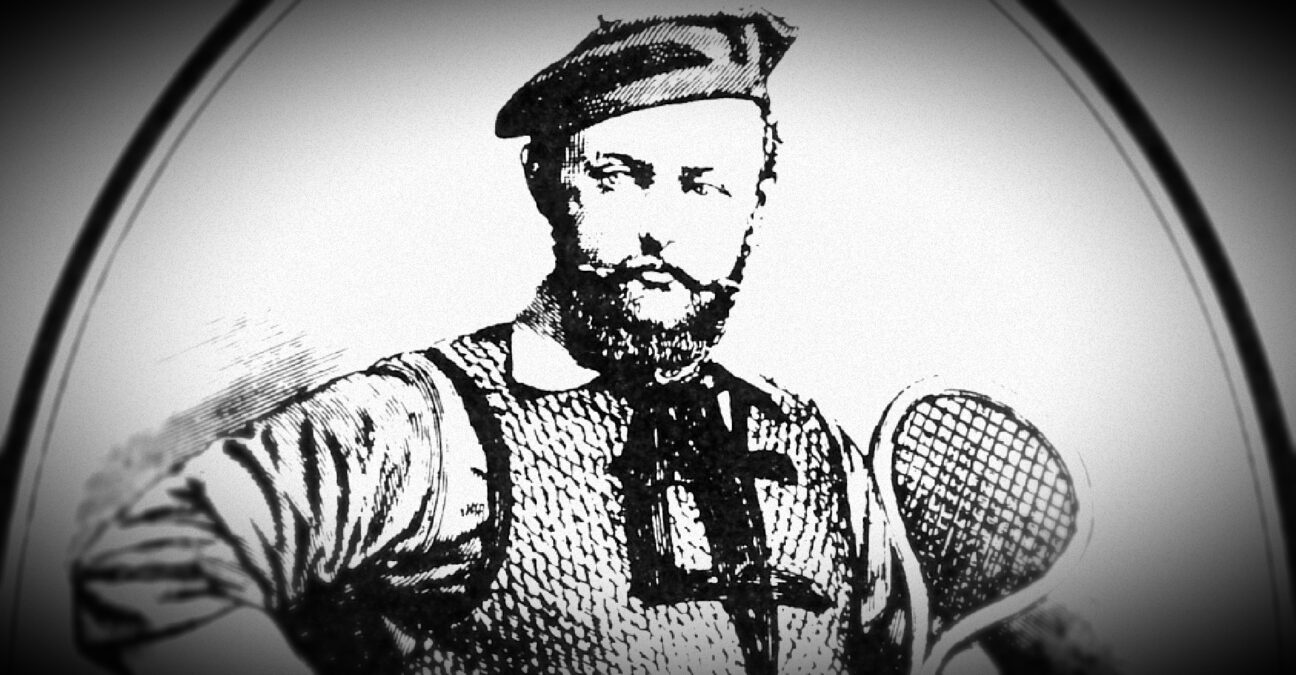October 16, 1833: The day the man who invented lawn tennis – Walter Clopton Wingfield – was born
Every day, Tennis Majors takes you back to one of the most iconic moments in tennis history. On this day in 1833, a boy named Walter Clopton Wingfield was born in Wales and went on to invent the game that is known today as lawn tennis
 Walter Clopton Wingfield
Walter Clopton Wingfield
What exactly happened on this day?
On this day, October 16, 1833, Walter Clopton Wingfield, the man who invented the game of lawn tennis in 1874, was born in Wales. Although he did not know it at the time, his invention would replace the ancient game of tennis, known these days as real tennis. Major Wingfield was never a great player at his own sport, and he didn’t even compete at the first Wimbledon Championships in 1877.
The facts: Lawn tennis was originally played on an hourglass-shaped court
The game of lawn tennis was inspired by the ancient game of real tennis, a game that was very popular among European aristocracy for centuries, but which could only be played indoors. When Charles Goodyear came up with a new ball made from rubber, which could bounce on the lawn and replaced the old leather balls, many real tennis players started to find a way to play an outside version of their favourite game.
While Harry Gem and Augurio Perera were experimenting with a new game they called Pelota, Major Walter Clopton Wingfield came up with his own rules in the early 1870s. His idea was to create a portable court for playing the old-fashioned tennis and he imagined the game being constructed on croquet courts.
Wingfield patented his game in February 1874 under the name of “Sphairistikè” (which was sort of ancient Greek for “the art of playing ball”), and in the spring of the same year, he started selling sets which included rubber balls, a net, poles, court markers, and an instruction manual.
On top of that, Wingfield wrote two complementary books, The Book of the Game, followed by The Major’s Game of Lawn Tennis. In its first version, the game was played on an hourglass-shaped court and the net was about 50cm higher than the one today. The service had to be made from a diamond-shaped box at one end only and it had to bounce beyond the service line instead of in front of it.
Major Wingfield’s friends were not too keen on the game’s original name. According to the BBC, it was Arthur Balfour, who later went on to become Prime Minister, who suggested “lawn tennis”.
According to Honor Godfrey, the former museum curator at Wimbledon, “Wingfield had very good connections with the clergy, the law profession, and the aristocracy and he sent thousands of sets out in the first year or so.” The game quickly gained in popularity, and the very first tournament was held in Birmingham in 1874. The following year, he was invited to a meeting at the Marylebone Cricket Club (Lord’s) to discuss the standards of the game, and Wingfield then considered that his sport was now entrusted to the MCC. Around the same time, after the death of his three sons, the inventor of lawn tennis lost interest in his game.
In the following years, the rules of lawn tennis evolved and in 1877, the hourglass court was made rectangular for the first Wimbledon Championships, won by Spencer Gore in July. After the authorities of the game analysed the results, it was decided to decrease the target area for the server, and to reduce the height of the net to make passing shots easier.
What next? Wingfield posthumously inducted into Tennis Hall of Fame
While lawn tennis kept growing in popularity all around the world, Major Wingfield kept himself busy. Around 1890, he founded a culinary society named “Le Cordon Rouge”, and he also invented a specific type of bicycle called “The Butterfly”.
Wingfield died in 1912 at the age of 78. He was inducted into the International Tennis Hall of Fame in 1997 for his contribution to tennis. The Wingfield Restaurant at the All England Club is named in his honour.










Your approach to tennis seems wide-renging, interesting, and well-balanced, without outlandish sensation seeking articles or comments. Well done and keep up this varied and interesting approach!